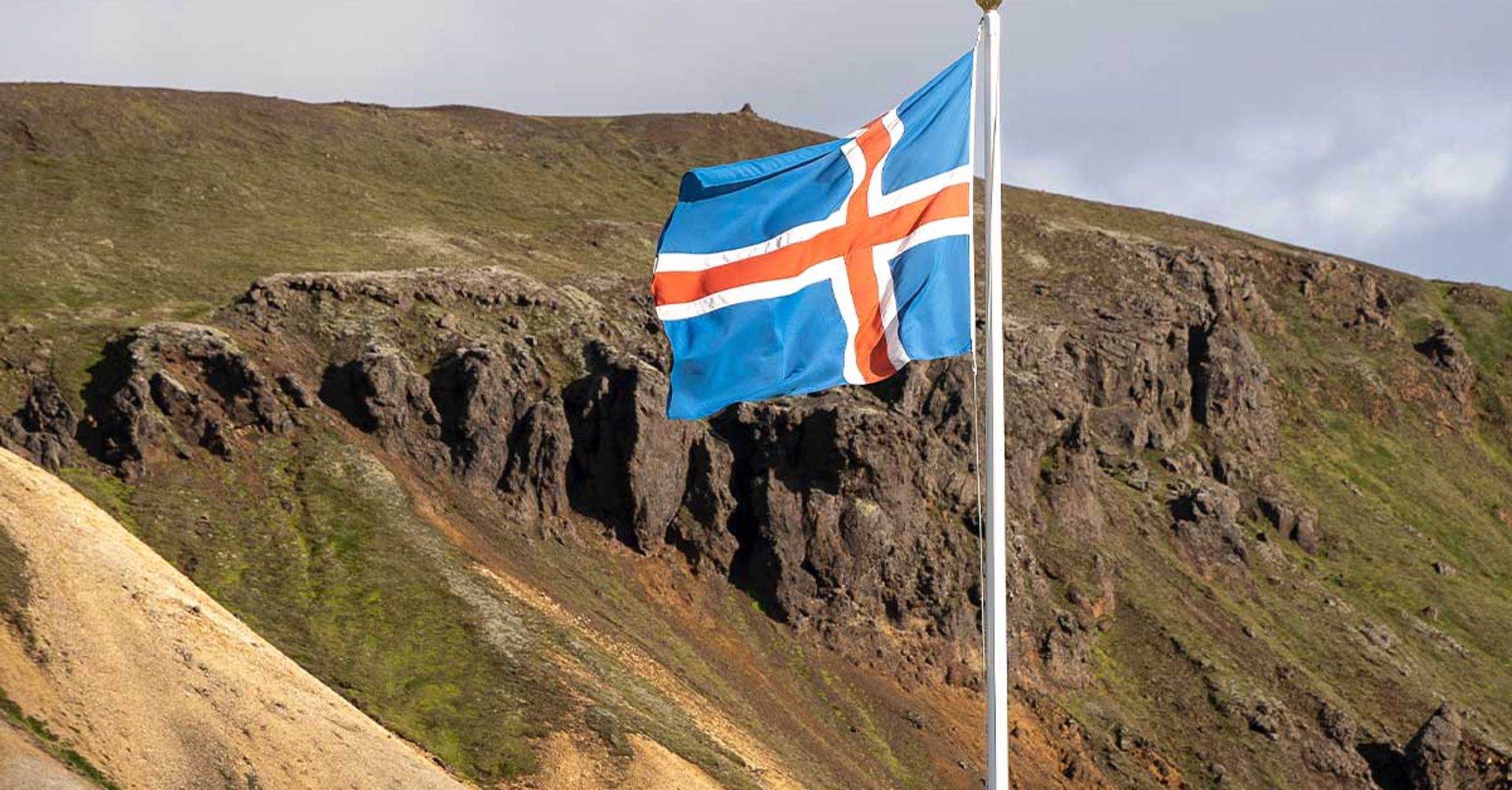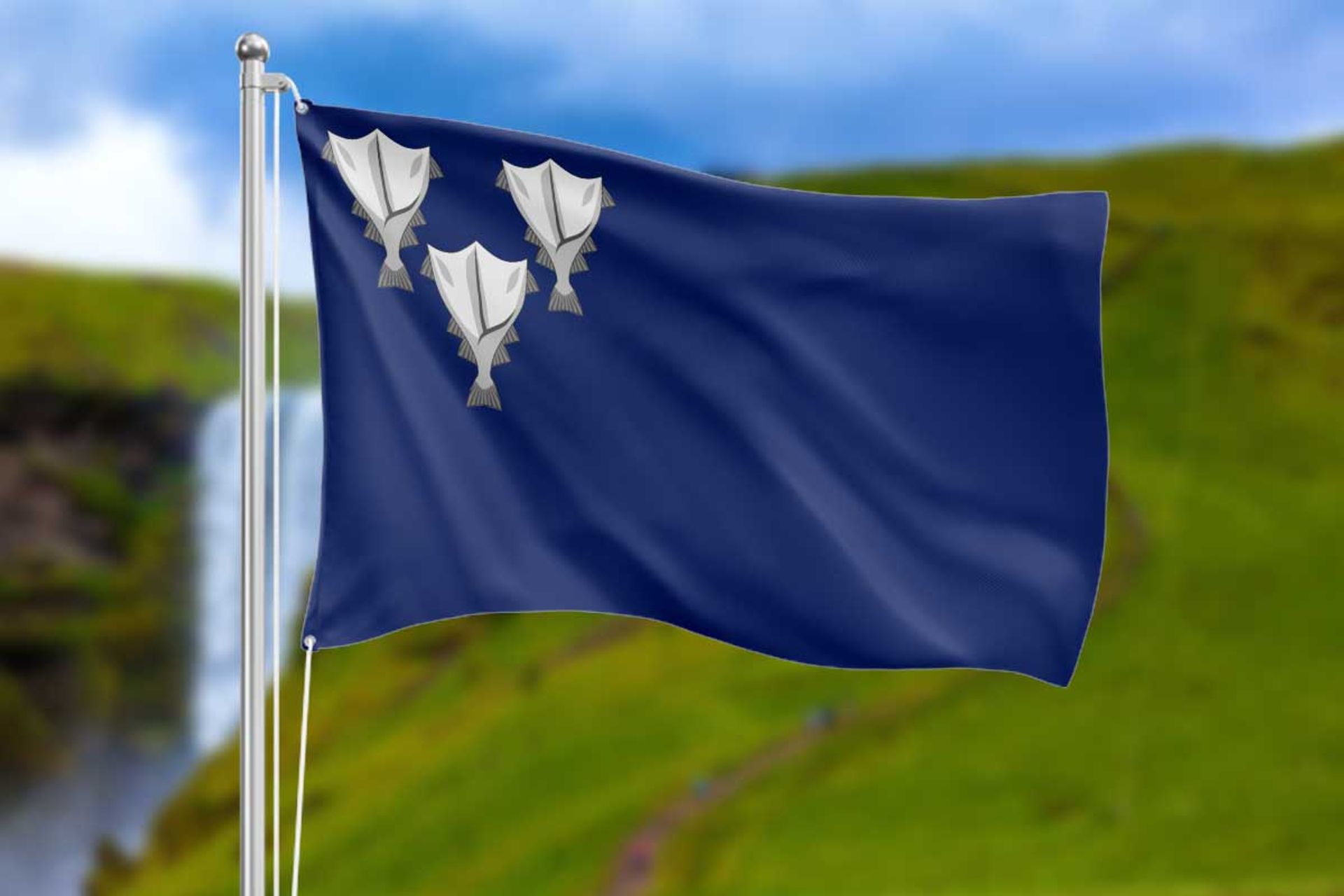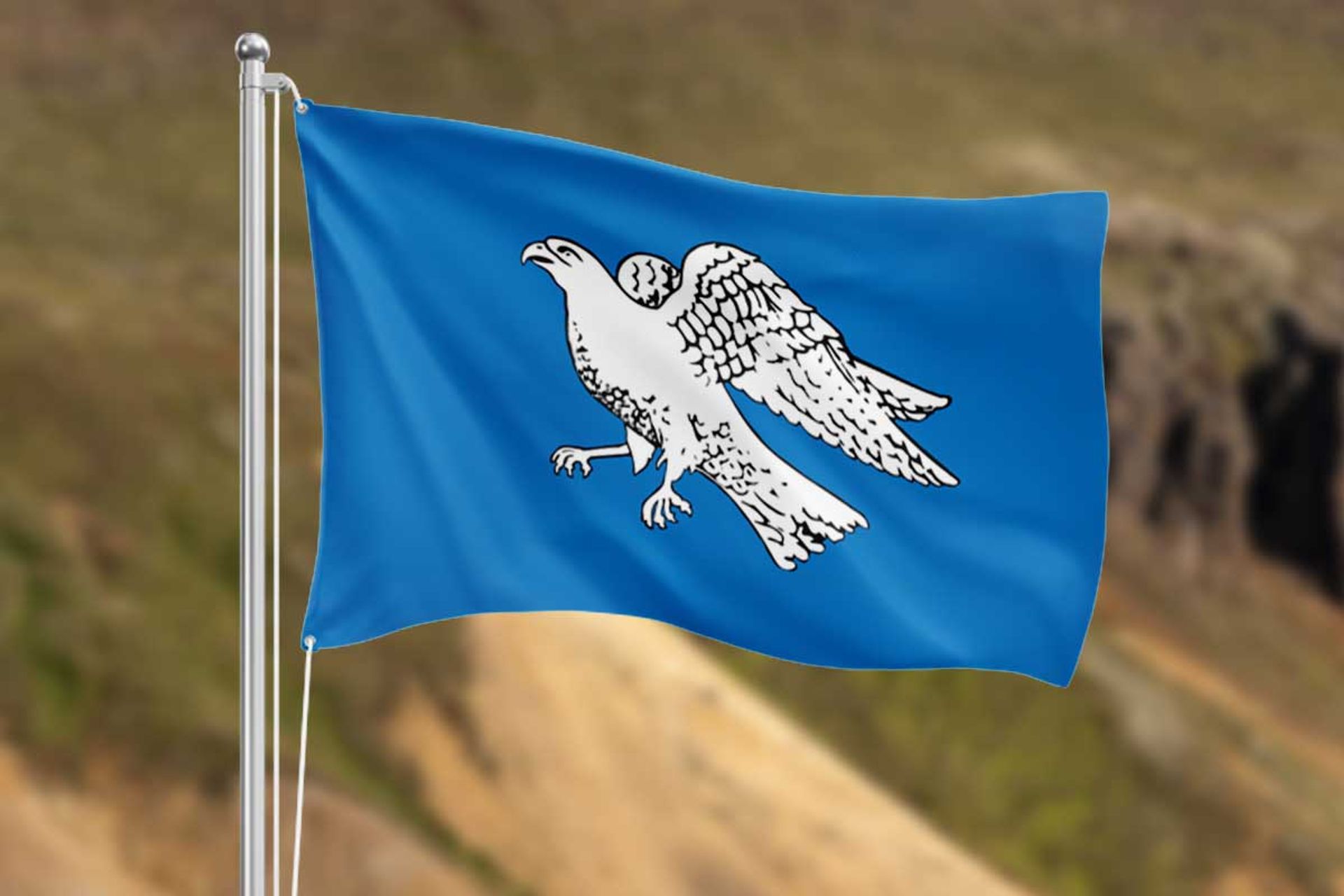 Icelandic Culture
Icelandic CultureAll About the Icelandic Flag
The Icelandic Flag is historic, with beautiful designs that honor the freedom of the country. In this article, we go over the history behind the flag and talk about old designs.
Jump to chapter
The Icelandic Flag is historic, with beautiful designs that honor the freedom of the country. The colors of the Icelandic flag are sky blue, snow white, and fiery red. The blue symbolizes the mountains, the white honors the snow and glaciers, and the bright red stands for the fiery volcanoes. At first, the red solely symbolized Christianity but later local Icelanders stated it is a staple of their volcanic system. The white cross on the flag is Scandinavian and honors the Nordic roots of Iceland. While this is the flag Icelanders commonly know today, it had a long line of history before it became that way.
Jorgen Jorgensen, also known as Jörundur “Hundadagakonungur”, introduced the first Icelandic national flag on July 12th, 1809. It did look quite different than today’s flag. This one was a deep blue with three white codfish in the top left corner. Even though it was a bizarre sight, it did highlight Iceland’s blue waters and one of the country’s main dishes. The flag lasted a short time since Jorgen only ruled Iceland for a few weeks after that.

Fast forward to 1870 when Sigurður Guðmundsson presented the next flag to Iceland. It was very popular with students who were fighting for Iceland’s independence. This flag did not have fish on it, however, it did still have a vibrant blue background. Instead of stripes or colors, this flag had a very large white falcon right in the middle of it. The falcon was a symbol for Iceland rising up and hopefully one day gaining their freedom.

In 1897, the Hvítbláinn flag was introduced during a parade. This one did not have animals or fish on it, in fact, it was very basic, with a captivating design. Featuring an in-depth blue backdrop with a white cross laying across it. It is pretty similar to Iceland’s flag today. Think of it as the first draft of the national flag. Einar Benediktsson, who was a poet, designed it, stating that the white was for snow and the blue for the mountains. You can visit this flag during your next trip to Iceland, by visiting the National Museum Of Iceland. The flag is on display for all visitors to enjoy.

Now onto the main event. In 1906 Matthías Þórðarson designed the current flag of the nation. It was presented at a meeting of the Reykjavík Students' Association on September 27, 1906. Being inspired by Einar Benediktsson's colors, Matthías stated that the blue would continue to represent the mountains. As the white would also still represent the snow. But, he then added red, which now represents the volcanoes. It became the unofficial civil flag in 1913. Finally on June 19th,1915 it was officially the nation's flag. When Iceland was finally separated from the Danish crown, the flag became even more popular, for obvious reasons. It was important that red was added to the flag. Because there was an argument that the previous flag was too similar to Greece. The red made the flag pop and displayed the importance the Icelandic landscapes have in the country.

Iceland has a few other flags that you may spot along your journey. There is the state flag, which is also known as the swallowtail flag. It is the regular national flag design with a swallowtail at the end of it. The “Flag of the President of Iceland”, is the president's flag. This flag is a bit different due to the Icelandic coat of arms being displayed with shield bearers on a white rectangular field.
There are flag rules in Iceland, as well as in many other countries. Flag time being one of them. This rule states that the flag should not be raised before seven o'clock in the morning. It should normally be lowered at sunset and should never be kept hoisted after midnight. Another rule is to never destroy or tamper with a flag. This could result in heavy fines or even jail time.
Today, the national flag is widely known and appreciated by Icelanders everywhere. You can spot the flag throughout the streets on Iceland’s National Day too. A day when everyone in the country comes together, to celebrate Iceland’s independence.
Latest Blog Posts
 Rental Cars
Rental CarsTop 15 Apps for Your Car Rental Adventure!
Setting off on a once-in-a-lifetime journey through Iceland is the top way to explore it. This breathtaking country is filled with National Parks, black sand beaches, endless ocean views and so much more. Many even spend weeks driving the infamous Ring Road to appreciate it in its entirety.
 Guides
GuidesWhale Watching in Iceland: A Complete Tourist Guide
Iceland is home to 23 different species of whales! These marine mammals call the surrounding Arctic waters their home. In fact, people travel from all over the world to experience whale watching in Iceland. So when is the best time to see these majestic sea creatures and where are the best places to go? This guide will tell you what types of whales you may see and the best way that you can see them! Here are our tips on whale watching in Iceland!
 Guides
GuidesA List of Must-Visit Beaches in Iceland
Calling all beach lovers! Iceland has so many sandy treasures for you to explore. There is truly something for every traveler, from striking black beaches to golden sandy shores. Iceland’s beaches are located all over the country. So you can visit one, or all of the best beaches in Iceland, by taking a road trip. From famous locations to unknown treasures, we got you covered. Enjoy a full beach day in the land of fire and ice. So what are you waiting for? Grab your beach towel and let’s hit the road!